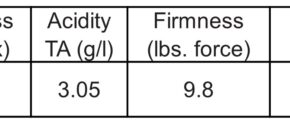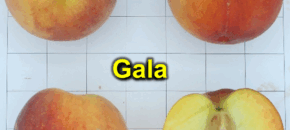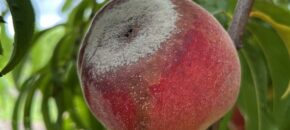Plectosporium blight, also known as Microdochium blight or White speck, caused significant problems in some pumpkin fields the last few summers in New Jersey. The soil-borne fungal pathogen, although somewhat uncommon, can unexpectedly show up in some years and cause significant losses if left uncontrolled. The fungus survives in the soil on decaying plant debris […]
Continue reading...Recognizing Angular Leaf Spot in Cucurbits
Angular leaf spot, caused by the bacterium (Pseudomonas syringae pv. lachrymans), is common in New Jersey and the region. Although it often shows up during cooler, wet weather; it can show up almost anytime during the production season with favorable weather conditions for its development. Angular leaf […]
Continue reading...Important fungal diseases in Asparagus during the summer months
Asparagus growers should consider scouting their fields regularly during the summer months for foliar disease development. Important pathogens that growers need to scout for on a regular basis include Purple spot, Cercospora, and Rust.
Continue reading...Mid-July Nectarine Varieties for NJ – Silvergem, Silverglo, Easternglo, and Avalon

There are four excellent, yellow and white-fleshed nectarine varieties harvested during mid-July. These varieties were developed at the Rutgers Fruit Breeding program and evaluated over the years at multiple Southern New Jersey locations. The ripening days could be a few days later for central and northern New Jersey.
Continue reading...Mid-July Peach Varieties – Gala, PF 8 Ball, Summer Serenade, July Rose, and PF Lucky 13

GALA is a medium to medium-large, globose, 70-90% scarlet red over yellow-orange ground color, yellow-fleshed, semi-freestone peach ripening July 11-15, about a week after the Sentry. The flesh is firm, with a sweet and mildly tangy flavor. The tree is vigorous and moderately productive. Note that these varieties were evaluated in southern New Jersey; as […]
Continue reading...Fruit IPM Report July 21, 2025

Peach: Diseases: Brown rot: Brown rot is appearing in ripening fruit throughout the state (Figure 1). Highly effective rot materials such as DMI’s (FRAC group 3) and Strobilurins (FRAC group 11) should be applied beginning 3 – 4 weeks prior to harvest. See the NJ Commercial Tree Fruit Production Guide for more information. Tarnished Plant […]
Continue reading...